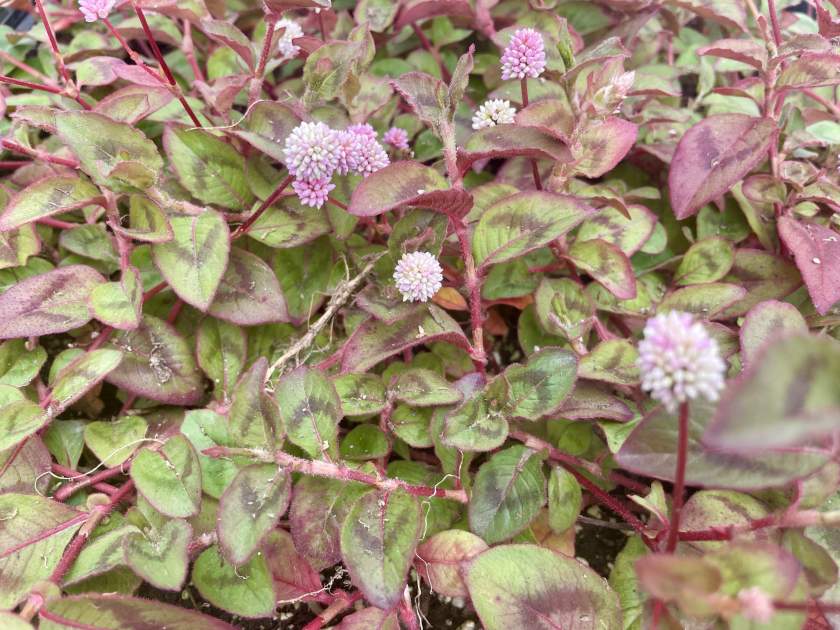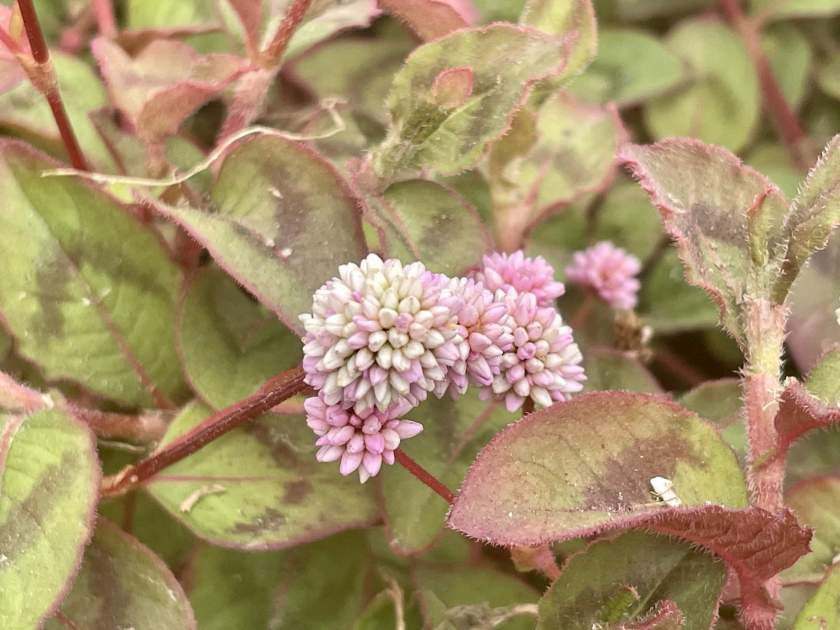Polygonum capitatum, commonly known as Pink Clover or Pink Knotweed, is a herbaceous perennial plant. It is native to East Asia, particularly China and Japan. It has also been introduced to other regions of the world as an ornamental plant and has naturalized in some areas. The plant belongs to the family Polygonaceae, which includes various flowering plants known for their diverse growth habits and often showy inflorescences.
Pink Clover features dense, low-growing foliage that forms a mat-like habit. The leaves are typically lance-shaped or elliptical, and they can vary in color from light to medium green. The foliage provides an attractive ground cover, spreading across the soil surface.
One of the most distinctive features of Polygonum capitatum is its unique inflorescence. The plant produces dense clusters of small, pink to red flowers that resemble clover or miniature catkins. The inflorescences, composed of numerous tiny flowers, create a captivating display. The blooms typically appear in late spring or early summer and may continue into the fall.
Pink Clover is appreciated for its ability to attract pollinators, particularly bees, and butterflies, due to its nectar-rich flowers. The plant’s spreading growth habit makes it an excellent choice for ground cover in areas where erosion control is desired. Additionally, it can tolerate poor soil conditions and is adaptable to both sun and partial shade. Polygonum capitatum spreads rather rapidly and self-seeds.

How to Grow Polygonum capitatum or Pink Clover:
Sunlight Requirements: Polygonum capitatum thrives in full sun to partial shade. It can tolerate a range of light conditions but prefers a location that receives at least a few hours of direct sunlight each day.
Soil Conditions: This plant is adaptable to various soil types, including loam, sand, and clay. It prefers well-draining soil but can tolerate occasional periods of moisture. Amending the soil with organic matter, such as compost, can help improve drainage and provide essential nutrients.
Watering: Pink Clover prefers moderate watering. Water the plant regularly during the growing season, ensuring that the soil remains consistently moist but not waterlogged. Reduce watering in winter when the plant is dormant.
Pruning: Pruning is generally not required for Polygonum capitatum. However, if desired, you can trim back the plant after flowering to promote compact growth and maintain its appearance. Remove any dead or damaged stems as necessary.
Propagation: Pink Clover can be propagated through division or by collecting and sowing seeds. The division is typically done in spring or early autumn. Dig up the plant and carefully separate the clumps, ensuring each division has roots attached. Replant the divisions at the same depth as the original plant and water thoroughly. Alternatively, collect the seeds after flowering and sow them in a well-prepared seed-starting mix.
Pests and Diseases:
Pink Clover is generally resistant to pests and diseases. However, like many plants, it may be susceptible to certain issues such as aphids or powdery mildew. Monitor the plant regularly and take appropriate measures, such as using organic or chemical controls, if pest or disease problems arise.
Pink Clover is a charming addition to garden beds, rock gardens, or as a ground cover in landscape designs. Its attractive flowers and spreading habit make it an eye-catching feature. By following these guidelines for growing and maintaining Polygonum capitatum, you can enjoy the beauty of its pink blooms and the ground-hugging foliage in your garden or landscape.




